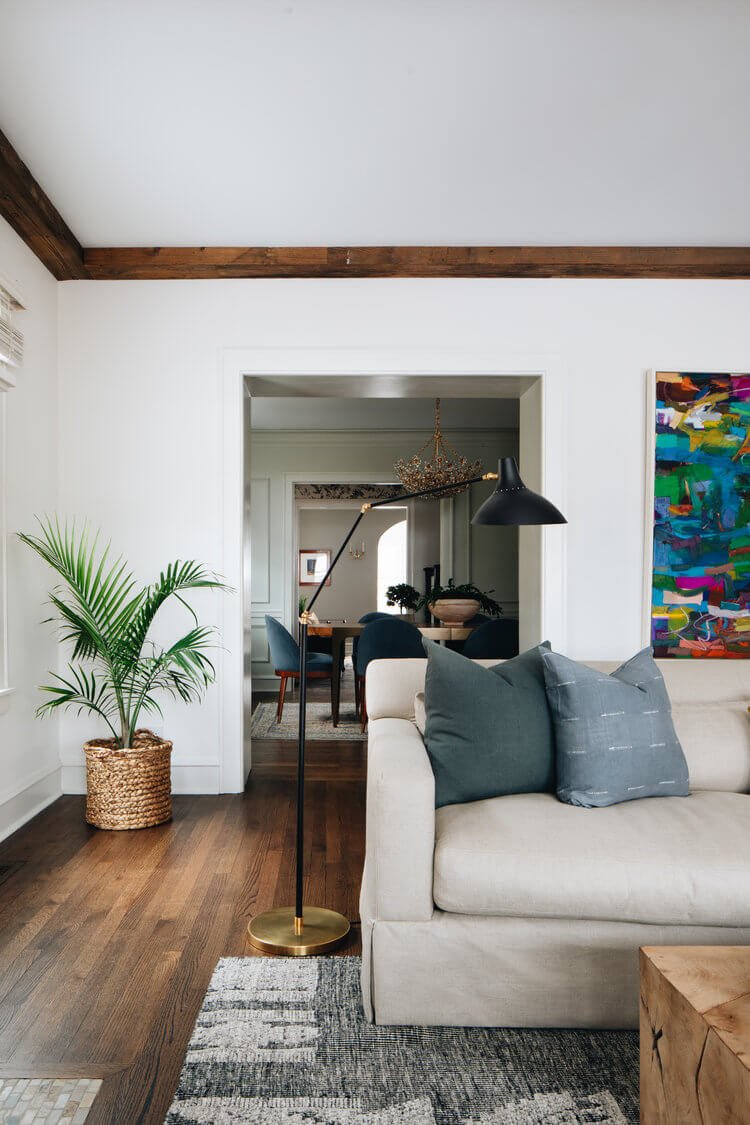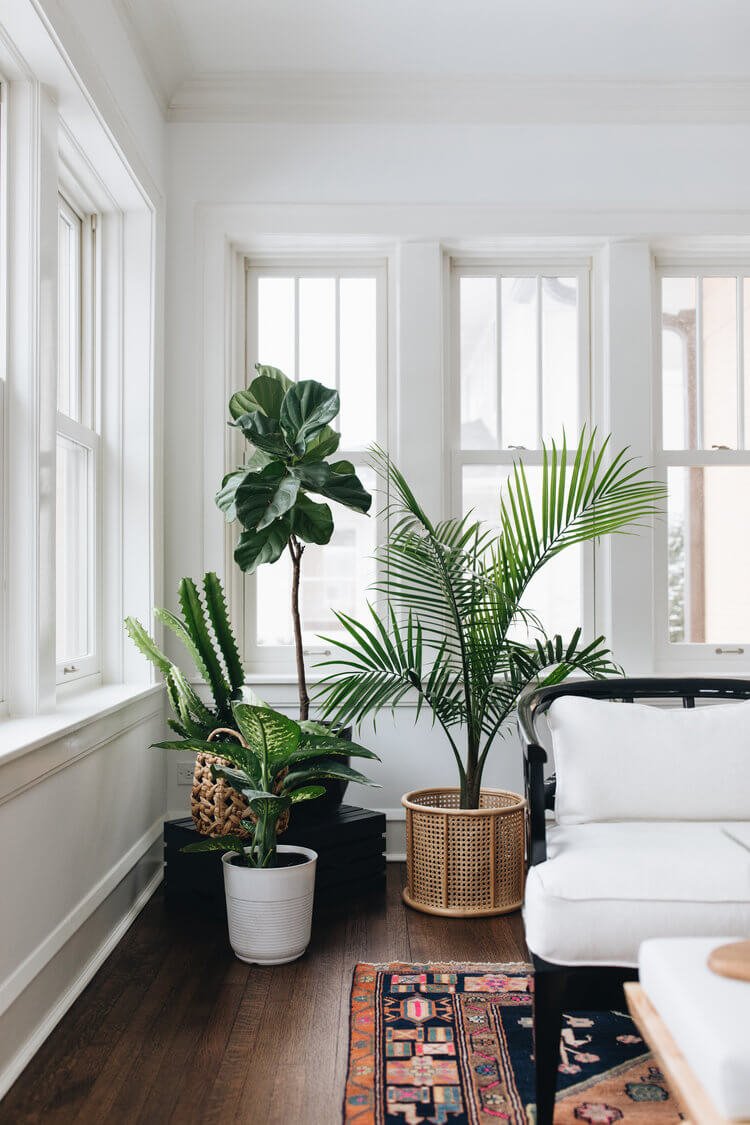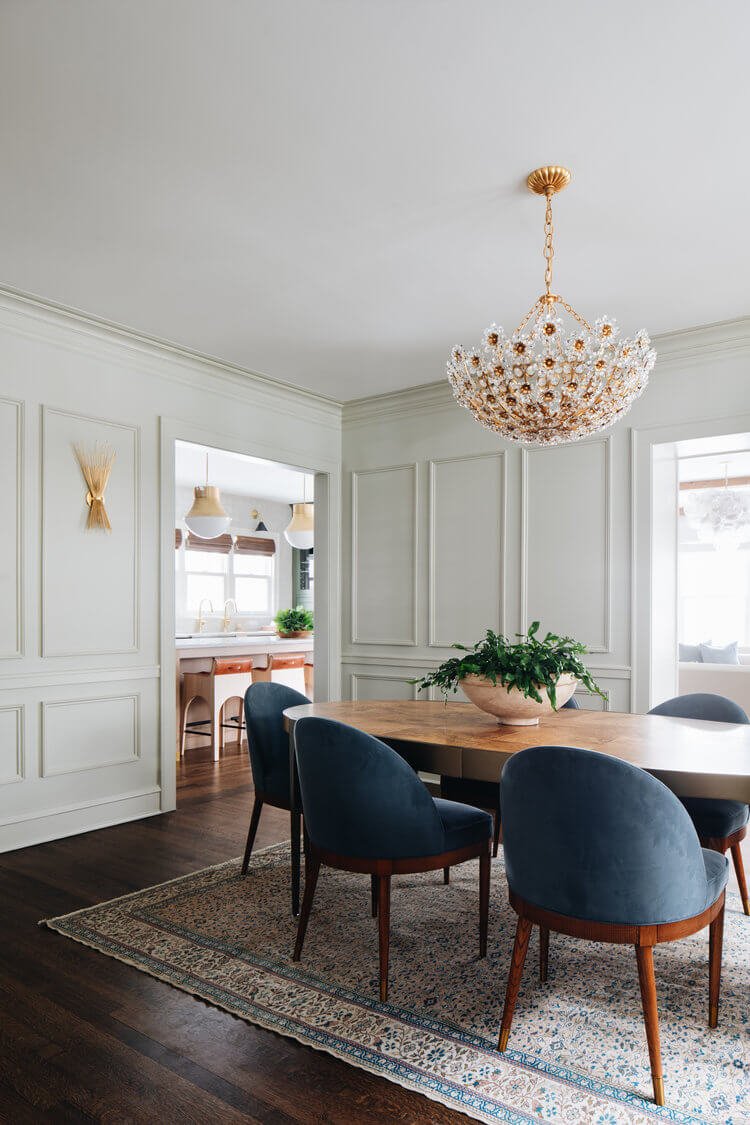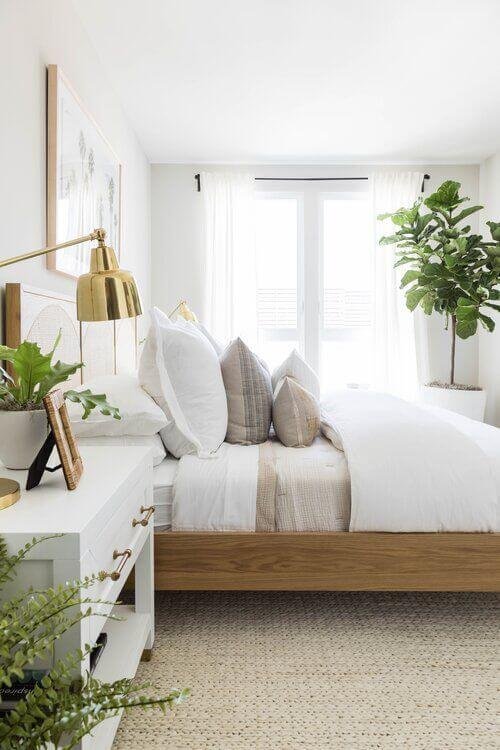How To Decorate With Houseplants
Incorporating greenery into the design of a space has become a huge trend in recent years, but for those of us plant-lovers out there, we’ve known for a long time that plants make an interior better! While plants are “on trend”, they are, of course, also a timeless way to style a space. The benefits of plants include improving oxygenation, filtering the air, reducing stress and improving mood, and of course, looking beautiful.
When it comes to styling, plants can add so much character, depth, and life to a space. If your home or office is feeling “blah”, a pop of greenery just might be that missing piece! Consider adding one to your coffee table, trailing down the side of a bookcase, dressing up your dining room table, and as an accessory to your nightstand. Think about the design elements that will be nearby the plant, and use the plant to add a contrasting shape and texture. This can be achieved through the decorative pot that you select as well.
If you’re new to plant parenthood, it’s usually a good idea to spend some time researching plants and planning out where they will go. So here are some simple tips on how to add plants to your space!
1. Determine where you have space to put a plant. Consider the lighting that your spot gets, as a dark corner with little sunlight will greatly decrease the variety of plants that will survive there. Think about using locations near windows. Also make note of what direction the window faces- west and south exposure are good for plants that like direct sun or bright light, while east and north-facing windows are best for plants that do well with lower light levels or can’t tolerate strong direct sun. Keep in mind that there may be other factors that determine how much light your space gets. For example, a large tree outside your window that blocks a lot of the sunlight may mean that you need to choose a plant that does well with lower light levels.
2. After determining where you can put some plants and what type of lighting will be available, look up images online and research which plants would be a good fit for you. Choose ones that you like the look of visually, but also ones that fit your lifestyle. If you know that you won’t have time to pay attention to your plants except for on the weekends, then choose plants that can tolerate being watered only once a week or less (cacti and succulents to the rescue!). While it can be tempting to buy every pretty plant you see, be realistic about what you would be able to maintain! Before heading out to purchase new plants, I like to write down the names of the ones that I’ve determined will be suitable for my home so I know what to look for.
P.S. If you have pets, keep in mind that some plants are toxic, so be sure to research that as well!
3. The next step will be to put your new plant in its designated spot and keep an eye on it to see how it’s doing. If you don’t want to repot it right away into a decorative pot, you can place the plastic nursery pot inside of a decorative one until you’re ready to repot it. Look out for signs that your plant is needing to be repotted, such as the roots growing out the bottom of the pot.
4. Lastly, if you’re feeling overwhelmed by the decision of which plants to buy and where to put them, I’ve found that sometimes you just need to try something for yourself. Don’t stress too much about whether your chosen plant will live or not; give it a try and see how it does! The more you try, the more you’ll learn about your space and what works and what doesn’t. I’ve lost a couple plants but learned a lot about my home as a result (it’s just too dry for ferns!).
While I always prefer real plants and flowers when possible, faux greenery has a place in décor as well! They can add huge visual impact to a spot that is impractical for a live plant. Dried flowers and branches are also a great option that can last a very long time and have the benefit of not looking fake. I am personally drawn to the faux greenery that are made out of more natural materials such as fabrics, wood, and paper as I find them to look more realistic than ones made solely out of plastic. Find the ones that speak to you!






